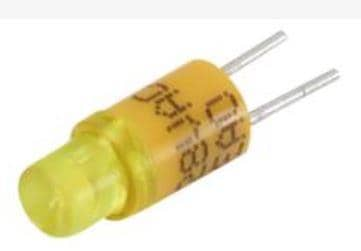
EAO
EAO is a leading global supplier of high-quality human-machine interface (HMI) components and systems. With over 70 years of experience, the company specializes in designing and manufacturing intuitive and reliable control elements such as switches, keypads, and touchscreens for various industries including transportation, machinery, and industrial automation. EAO's products are known for their durability, precision, and ergonomic design, ensuring optimal user experience and efficient operation. The company also offers customized solutions to meet specific customer requirements, leveraging their expertise in engineering and design. EAO is committed to delivering innovative HMI solutions that enhance safety, efficiency, and user satisfaction in a wide range of applications around the world.
LED Indication - Discrete
Results:
6
Series
Millicandela Rating
Wavelength - Dominant
Color
Voltage - Forward (Vf) (Typ)
Lens Transparency
Lens Color
Configuration
Current - Test
Size / Dimension
Mounting Type
Height (Max)
Supplier Device Package
Lens Style
Package / Case
Lens Size
Viewing Angle
Grade
Qualification
Features
Wavelength - Peak
Results remaining:6
Applied Filters:
EAO
About LED Indication - Discrete
Light Emitting Diodes (LEDs) are semiconductor devices that emit light when an electric current flows through them. LEDs in this category are generally utilized in single or array configurations to indicate the status of printed circuit boards. LEDs can be differentiated based on various parameters like package/case types, wavelength, viewing angle, forward voltage, current rating, millicandela rating, color, and mounting type. The package/case type refers to the physical form of the LED and can vary from small surface-mount packages to larger through-hole packages. Wavelength is a critical parameter that defines the color of the light emitted by the LED. The range of wavelengths emitted by the LED determines its color, and commonly available colors include red, green, blue, yellow, and white. Viewing angle refers to the angular range over which the emitted light is visible and can vary from several degrees to more than 180 degrees. Forward voltage is the voltage required for optimal operation of the LED, and current rating is the maximum current that can pass through the LED without damaging it. Millicandela rating indicates the brightness of the LED, and it typically ranges from a few milli-candelas to several hundred. Mounting types can vary from surface-mount to through-hole and may be available in common anode or cathode configurations or bidirectional. Overall, these parameters enable engineers and designers to select the appropriate LED for specific applications. Whether it's for indicating status on a printed circuit board, illuminating a display, or providing backlighting, LEDs offer a versatile and efficient solution with precise control over illumination characteristics.




